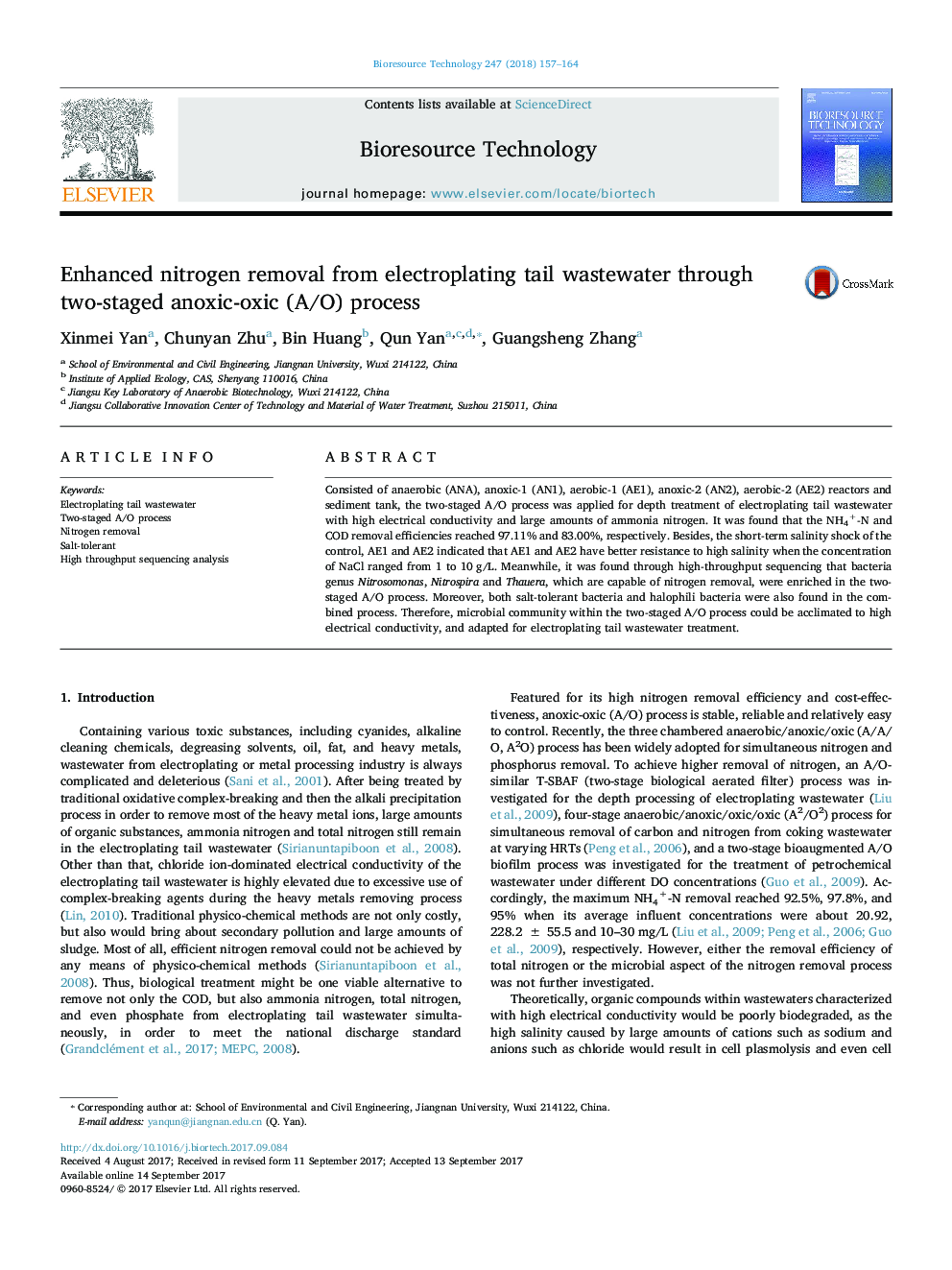| Article ID | Journal | Published Year | Pages | File Type |
|---|---|---|---|---|
| 4996635 | Bioresource Technology | 2018 | 8 Pages |
Abstract
Consisted of anaerobic (ANA), anoxic-1 (AN1), aerobic-1 (AE1), anoxic-2 (AN2), aerobic-2 (AE2) reactors and sediment tank, the two-staged A/O process was applied for depth treatment of electroplating tail wastewater with high electrical conductivity and large amounts of ammonia nitrogen. It was found that the NH4+-N and COD removal efficiencies reached 97.11% and 83.00%, respectively. Besides, the short-term salinity shock of the control, AE1 and AE2 indicated that AE1 and AE2 have better resistance to high salinity when the concentration of NaCl ranged from 1 to 10Â g/L. Meanwhile, it was found through high-throughput sequencing that bacteria genus Nitrosomonas, Nitrospira and Thauera, which are capable of nitrogen removal, were enriched in the two-staged A/O process. Moreover, both salt-tolerant bacteria and halophili bacteria were also found in the combined process. Therefore, microbial community within the two-staged A/O process could be acclimated to high electrical conductivity, and adapted for electroplating tail wastewater treatment.
Keywords
Related Topics
Physical Sciences and Engineering
Chemical Engineering
Process Chemistry and Technology
Authors
Xinmei Yan, Chunyan Zhu, Bin Huang, Qun Yan, Guangsheng Zhang,
